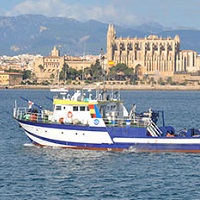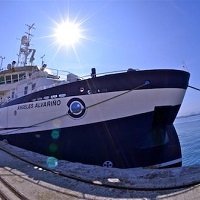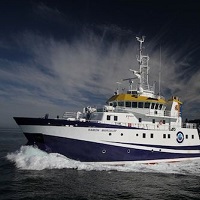Keyword
Phosphorus concentrations in suspended particulate material
15 record(s)
Type of resources
Categories
Topics
INSPIRE themes
Keywords
Contact for the resource
Provided by
Years
Formats
Status
-

EVALUACION DE LA SENSIBILIDAD DEL BUCLE MICROBIANO AL IMPACTO DE MULTIPLES FACTORES EN ECOSISTEMAS ACUATICOS MEDITERRANEOS OBJETIVOS: De acuerdo con los planteados en el proyecto Microsens, los objetivos de la campaña serán los siguientes: 1. Cuantificar la biodiversidad de la comunidad planctónica, mediante la determinación de: 1.1 La abundancia y biomasa de bacterias y picoplancton autótrofo 1.2. La composición taxonómica, abundancia y biomasa de fitoplancton 1.3. La composición taxonómica, abundancia y biomasa de nanoflagelados y ciliados. 1.4. La composición taxonómica, abundancia y biomasa de micro y macrozooplancton. 2. Cuantificar el flujo de carbono entre los distintos grupos funcionales que constituyen el bucle microbiano y la cadena de consumidores, para lo cual se llevarán a cabo medidas de la producción primaria y respiración en diferentes fracciones del plancton 3. Determinar las respuestas funcionales y metabólicas de la comunidad planctónica ante cambios en el espectro de radiación solar y en la concentración de nutrientes mediante experimentos de micro-cosmos realizados a bordo.
-
1. Estimation de l'abondance de les poissons pélagiques par echointegration de les eaux côtières sud de l'Europe. 2. Cartographie de l'are de distribution. 3. Estimation de la abondance des ouefs par enregistrementg en continue. 4. Etalonnage entre l'enregistrement en continue des ouefs et les classiques estations avec Pairovet. 5. Estimation de la biomasse fractionée (Mèthode CHN) de plankton. 6.Etude de les conditions oceanographiques et méteorologiques et sa rélation avec la distribution et abondance des oeufs et adultes des poissons pélagiques. 7. Hydrologie: Charactesisation des propietés termohalines des eaux sur le plateau continental. Mesure de profiles verticales de température, salinité et fluorescende dans des stations et acquisition de données de surface (thermosalinometrie, fluorescence, métèorologie). 8. Placton: Détermination des patrons de distribution de la diversité taxonomique et de la biomasse en différent classes de taille du plancton (phyto et zooplancton) dans la zone d'étude. 9. Cartographie de l'abondance des prédateurs
-

The objective of the campaigns of Project 3-ESMAREU is monitoring eutrophication in selected points of the Iberian Mediterranean coast.
-

The objective of the campaigns of Project 3-ESMAREU is monitoring eutrophication in selected points of the Iberian Mediterranean coast.
-

-El objetivo ESMAREU es continuar con el programa de vigilancia de la eutrofización en el litoral mediterráneo conforme a la estrategia de seguimiento de la eutrofización de MEDPOL iniciada en 2010, así como recopilar datos que permitan evaluar la calidad ambiental del medio marino conforme a las obligaciones derivadas de la Directiva Marco sobre Estrategia Marina de la UE (Directiva 2008/56/CE) y su transposición a la normativa española (Ley 41/2010, de 29 de diciembre, de protección del medio marino; BOE nº 317, 30 de diciembre de 2010.
-

1. Estimation de l¿abondance de les poissons pélagiques par echointegration de les eaux côtières sud de l¿Europe. 2. Cartographie de l¿are de distribution. 3. Estimation de la abondance des ouefs par enregistrementg en continue. 4. Etalonnage entre l¿enregistrement en continue des ouefs et les classiques estations avec Pairovet. 5. Estimation de la biomasse fractionée (Mèthode CHN) de plankton. 6.Etude de les conditions oceanographiques et méteorologiques et sa rélation avec la distribution et abondance des oeufs et adultes des poissons pélagiques. 7. Hydrologie: Charactesisation des propietés termohalines des eaux sur le plateau continental. Mesure de profiles verticales de température, salinité et fluorescende dans des stations et acquisition de données de surface (thermosalinometrie, fluorescence, métèorologie). 8. Placton: Détermination des patrons de distribution de la diversité taxonomique et de la biomasse en différent classes de taille du plancton (phyto et zooplancton) dans la zone d¿étude. 9. Cartographie de l'abondance des prédateurs
-

>>>ESMAREU<<<: The ESMAREU goal is to continue surveillance program eutrophication in the Mediterranean coast under the monitoring strategy of MED POL eutrophication began in 2010, and collect data to assess the environmental quality of the marine environment in accordance with the obligations derived from the marine Strategy Framework Directive of the EU (Directive 2008/56 / EC) and its transposition into Spanish law (Law 41/2010 of 29 December on the protection of the marine environment; BOE No. 317, December 30 2010). >>>RADMED<<<: Monitoring of oceanographic variables (physical, chemical and biological) along singular points of the Spanish Mediterranean coastline.
-

The scientific objectives of the cruise include the characterization of thermohaline fields, hydrodynamics, biogeochemistry and complementary biological measuremens in Atlantic Galician waters in a transect westwards from Finisterre surpassing the Galician Bank to the interior of the Iberian Basin, covering the entire water column to about 4,500 m deep. The cruise is part of a series that begun in 2003
-

The scientific objectives of the cruise include the characterization of thermohaline fields, hydrodynamics, biogeochemistry and complementary biological measuremens in Atlantic Galician waters in a transect westwards from Finisterre surpassing the Galician Bank to the interior of the Iberian Basin, covering the entire water column to about 5,000 m deep. The cruise is part of a series that begun in 2003
-

SCAPA will investigate the structural and dynamic attributes of the planktonic system in the Cantabrian Sea. This scientific objective will be in turn the base for a critical testing of the plankton indicators proposed by the Marine Strategy Framework Directive (MSFD) and for the development of new alternatives if necessary. SCAPA will carry out a crossed comparative approach enclosing the main modes of plankton variability; i.e. shelf, slope and oceanic waters with vertical resolution at seasonal and circadian time scales. It will study all planktonic components, from viruses to macrozooplankton at several organization levels (species, functional groups and trophic level), including also non-living organic matter derived from their activity (i.e. dissolved organic matter, aggregates and phaecal pellets). It will quantify production and biomass ratios across these organization levels and organic matter pools, specifically measure bacterial and primary production and downward fluxes (vertical migration and sediment traps) to diagnose food web structure and trophic pathways. SCAPA will focus on several aspects currently identified to present a deficit of information: seasonal variability in the oceanic domain (critical to implement indicators), the role of macroplankton (mainly at slope and oceanic domains) and microphagous gelatinous zooplankton, add on scarcely studied plankton vertical migration and quantification and quality of sinking biogenic material. The methodological approach takes advantage of the ongoing monitoring program RADIALES and will increase sampling effort to resolve vertical and circadian resolution at four times during the seasonal cycle. It includes a series of methodologies and techniques (e.g. flow cytometry, HPLC, plankton image analysis and automated classification) that are particularly efficient in sample time processing; a critical aspect for implementing plankton indicators, which have to be obtained by robust methodologies with reasonable costs and at operational temporal scales. SCAPA approaches the societal challenge of an ecosystem-based marine management, explicit in the European MSFD. Management actions related with the marine environment (e.g.: Fisheries) require implementing a series of indicators that resume the main structural and dynamic attributes of the plankton system. The latter is challenged, however, by the high complexity of the structure and dynamics of this system. Resolving this complexity is the main scientific objective of SCAPA. The development of indicators in marine ecology is in its founding state, although recently fostered by the MSFD.
 Catálogo de datos del IEO
Catálogo de datos del IEO